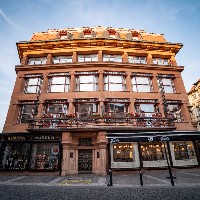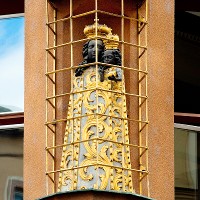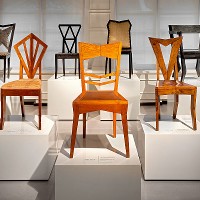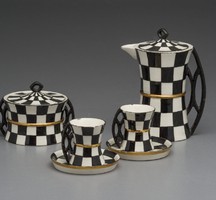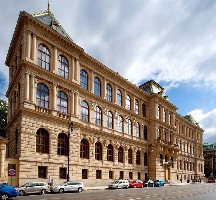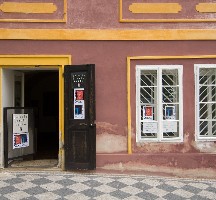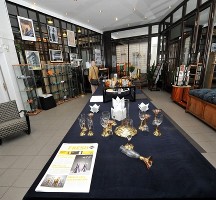Breadcrumbs navigation
Museum of Decorative Arts – House at the Black Madonna (Dům U Černé Matky Boží)
A masterpiece of Czech Cubist architecture, the building was constructed from 1911 to 1912 according to designs by the Czech architect Josef Gočár. It's located in the Old Town between Celetná Street and Ovocný trh. Its name comes from the Baroque statue that is located on its corner. After a complete renovation the building has become home to a Museum of Decorative Arts exhibition about Cubism.
- Monuments & Architecture
- house
- Cubism
- Arts & Entertainment
- museum
- gallery
- Prague Visitor Pass
Opening hours
-
- January – December
- Tue
- 10.00 – 20.00
-
- Wed, Thu, Fri, Sat, Sun
- 10.00 – 18.00
Entrance fee
- basic 150 CZK
- reduced 80 CZK
Contacts
- Museum of Decorative Arts – House at the Black Madonna (Dům U Černé Matky Boží)
- Ovocný trh 19
- 110 00 Praha 1 – Staré Město
- +420725038628
Programme
Object history
The House at the Black Madonna
The oldest Cubist house in Prague was built for the wholesale merchant František Josef Herbst according to a project of the then thirty-one-year-old architect Josef Gočár in 1912. It was the first one to be built in the new Cubist style in place of a demolished Baroque house At the Black Madonna, which was also called At the Golden Grille. From this house it got its name and the original symbol - Baroque statue of black Madonna with a child, which is placed at the corner on the level of the first floor behind a golden grille. There are approximately twelve Black Madonnas in our country, the most famous one being at Loretto in Hradčany. These statues used to be placed in the underground cathedral crypts by the water springs.
The Club named For the Old Prague was very critical towards the town council for permitting the demolition of the original house. Yet the new building was a very pleasant surprise for everyone. A new five-storied house with mansards has a massive Cubist portal, facade, windows and staircase, and its entire Cubist appearance, which definitely belongs to the 20th century, is very sensitively composed into the historical surroundings. The author of the project even managed to include the old house emblem in the new building. Also the interior was furnished in Cubist style, including the furniture and other details. Originally, there was a wine-cellar in the basement, the famous coffeehouse Grand Café Orient on the first floor, shops selling textile, ready-made clothes and fashionable goods on the third floor, a flat and an office of the custodian on the 4th floor, and a closet, attics and laundry on the 5th floor. After World War I, the coffeehouse and the shops were replaced by a bank, and after 1948, it was the seat of the national enterprise Exhibition business (n.p. Výstavnictví).
During the years 1993 - 1994, the house went through a complete reconstruction according to a project of Karel Prager, and it was returned into the original state. Using a special paste helped to relieve the house of the unsuitable coating and according to the preserved documentation, a part of the glassed-in roof was completed, which was not realized in Gočár’s project. In 2000, a carved polychrome copy of the statue of black Madonna from the studio at the Academy of Graphic Arts was installed on the house. In 1994, the Czech Museum of Graphic Arts became the administrator and user of the house and opened here a permanent exposition of Czech Cubism during the years 1911 - 1919. This exposition aimed at presenting Cubism as a complete lifestyle, and also touches on architecture (plans, projects, and photographs), painting, sculptures, as well as utility arts. Among the interesting exhibits, there is for example Gočár’s sofa from 1913. Czech Museum of Graphic Arts closed the exposition in the House at the Black Madonna on the 30th January 2002. Museum of Czech Cubism was re-opened after reconstruction on the 28th November 2003 by the National Gallery and was closed on 2nd September 2012.
The House at the Black Madonna has been a National Cultural Monument since the 1st July 2010.
Information source: Uměleckoprůmyslové museum v Praze

